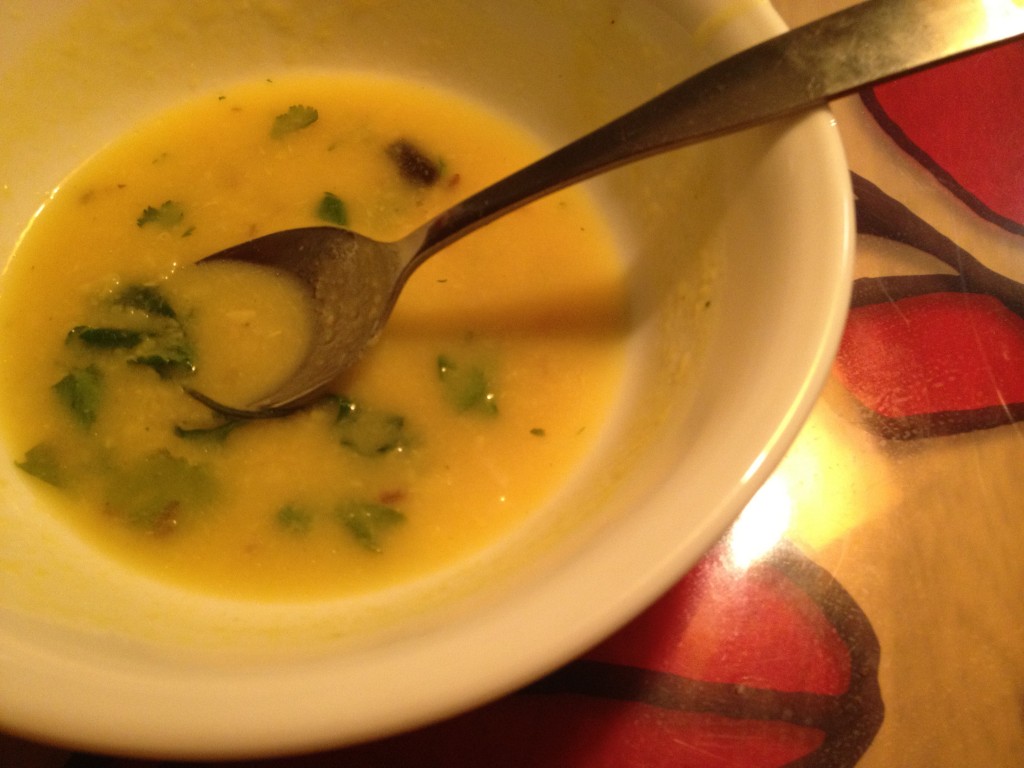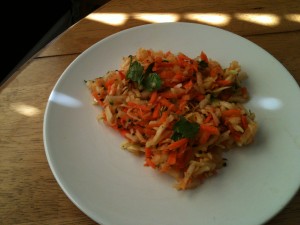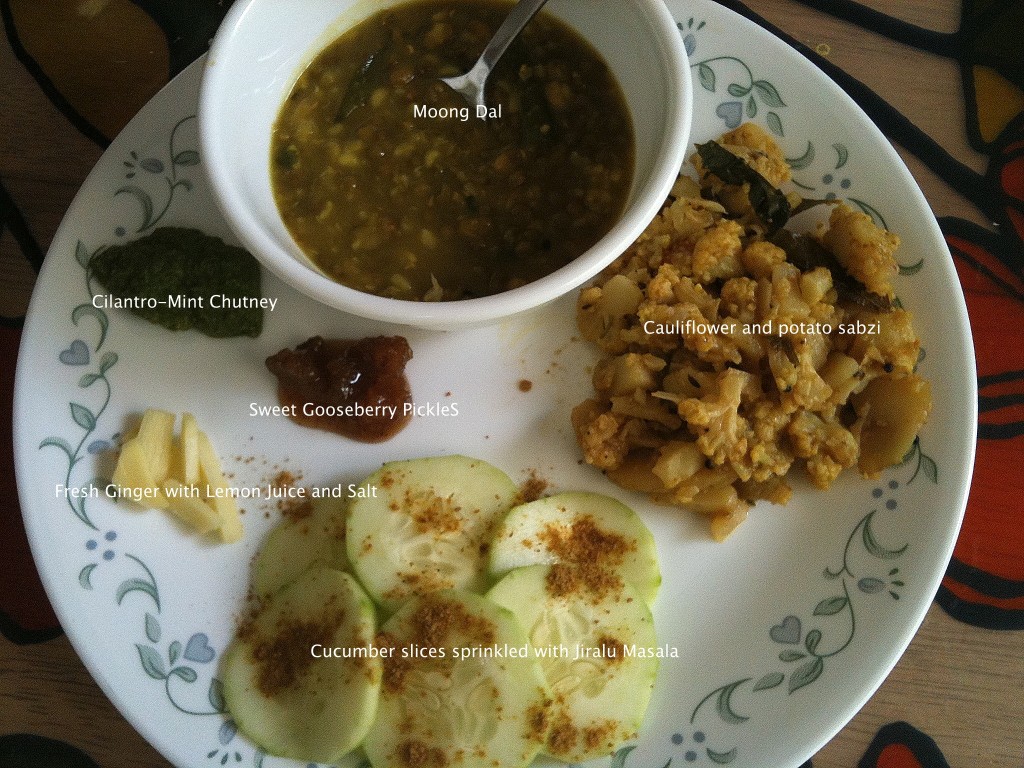In my mind, ghee (or clarified butter) is both literally and metaphorically the food of the gods. Such richness of taste and flavor it has that even a small drop can transform a dish into something else. Drizzle a teaspoon of warm ghee over a simple dish of dal and it becomes luxurious. Slather it over warm toast, sprinkle some sugar and you have a snack that delights the kid in you. Well, it used to be my favorite snack.
Mom used to (and still continues to) make ghee from scratch. In India, the milk we get comes from the local dairy farms. It is non-homogenized and sometimes non-pasteurized as well. So it is as raw as it can get. In places like my aunt’s ancestral home in Kerala, it is at its rawest… We get it straight from the cows after the calves have drunk their fill. Since the milk is non-homogenized, the cream separates out at the top. It is skimmed off and stored separately. After a couple of weeks, when there is a substantial mound of cream, some yogurt is added to it. Thus buttermilk is born. The buttermilk is then churned so that the butter separates out. In my home, this butter would be stored separately. When you have a sizable chunk of butter, you place it in a stainless steel pan on the stove. Warm it. The butter begins to melt, and then it changes color from white to pale yellow to a darker shade of yellow, gold and then brown. The fragrance evolves too, changing from the slightly sour buttery scent to a richer and deeper one. At this point, you can turn the heat off. Keep it longer and it could start to burn. Many people turn off the heat as soon as the color changes to a dark yellow. I suppose this is the clarified butter stage. I like keeping it to the pale brown stage (browned butter) since it has a more toasty flavor that I prefer.
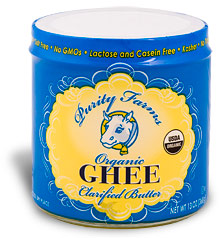
Ghee (picture courtesy website http://www.purityfarms.com/)
Cut to the present day when neither the milk I get is non-homogenized nor do I have the time to skim the cream or churn the buttermilk. So what do we do? Earlier, we used to buy ghee sold by Purity Farms. It is pretty good but I wanted to make my own. So I bought cultured organic non-salted butter from the store and made ghee out of it, as per the process above. It is fairly good ghee and I use it in most Indian dishes I make.
The Kerala branch of Ayurveda also uses ghee as a medium for various herbal formulations and medicines. In the winter, my mother-in-law makes traditional sweets that comprise of ghee, jaggery and wheat, all “heating” ingredients that lubricate the joints, drive out the cold from the system and bring warmth within. One of the traditional desserts in Kerala is Sharkara Paayasam. It involves making a syrup of jaggery and ghee, adding cooked rice to it, and then topping it off with toasted cashews and raisins and fresh coconut. Coconut milk can also be added to this heavenly preparation.
What about the gods? Well, when you perform Homas and other Vedic ceremonies, ghee is offered into the fire along with other substances as dried fruits, nuts, coconuts, etc. It is truly a divine and transforming experience.
1. I use the Organic Valley brand of unsalted organic cultured butter (bottom left).
2. I let the butter sit out for a while so that it’s soft before I turn on the heat (top left).
3. The butter gradually begins melting and bubbles rise to the surface. It turns shiny and golden yellow in color (right).
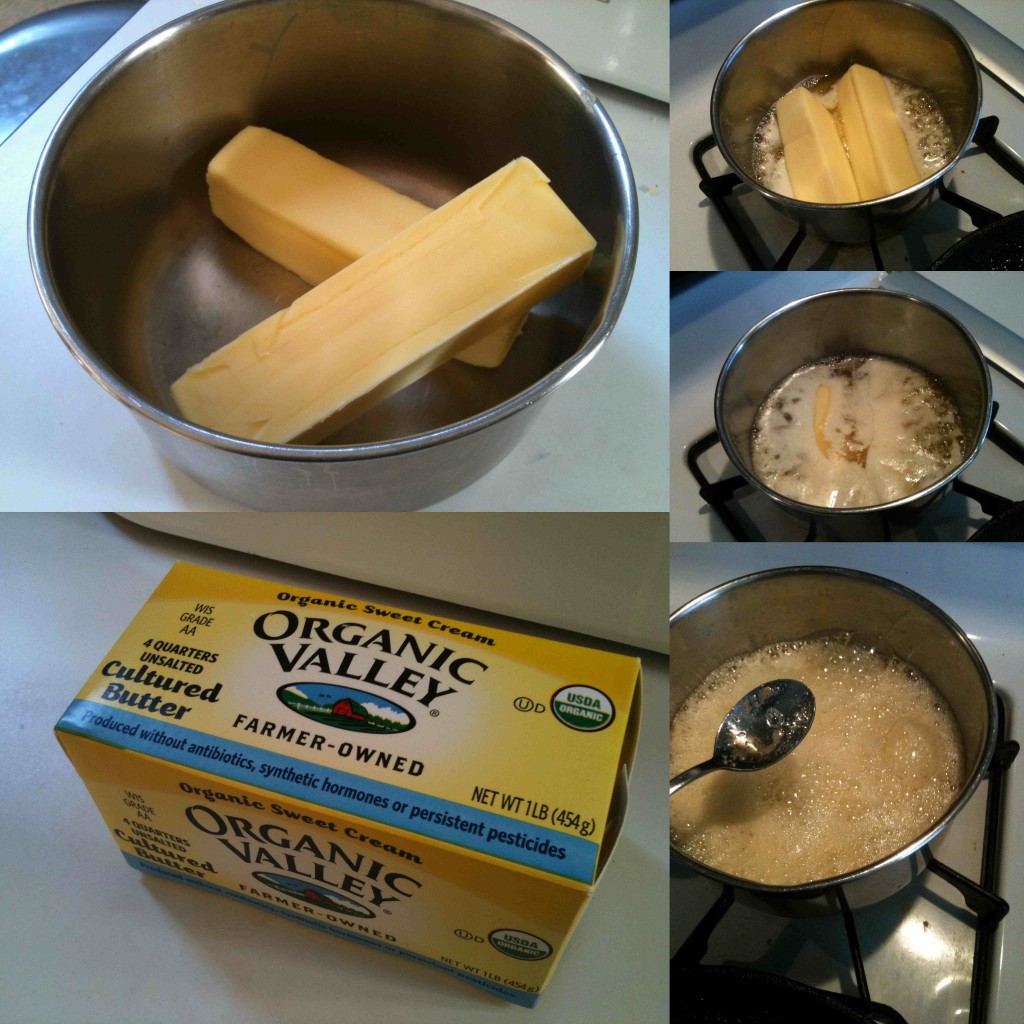
Making Ghee at Home
4. As the color turns dark brown and the toasty fragrance becomes stronger, turn off the heat.
5. I use a stainless steel sieve to strain out the milk solids.
6. As the ghee solidifies (which happens pretty soon in winter), it acquires a smooth golden sheen.
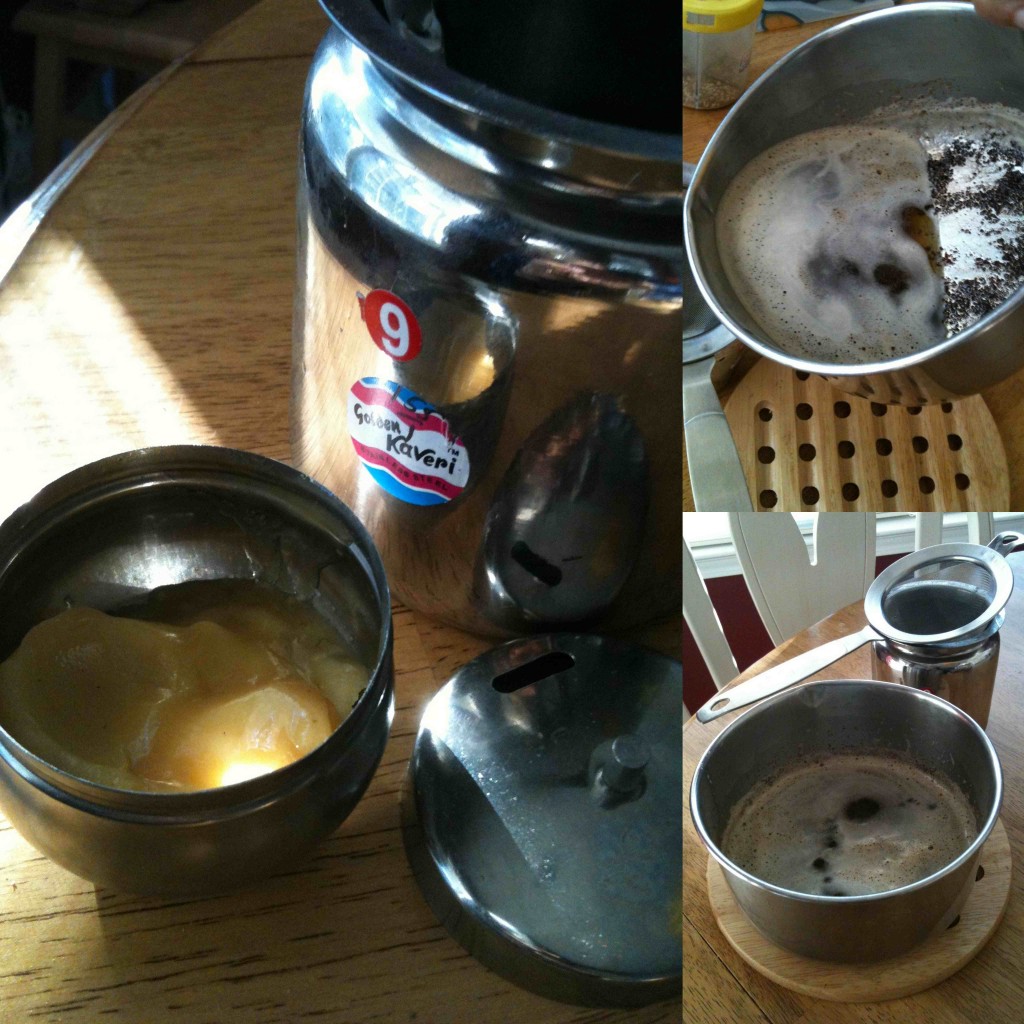
Voila!
Found an interesting article that describes the benefits of ghee on the Amrita Veda website, Ghee – An Ayurvedic Perspective.
Here is an excerpt, “Although Ghee kindles or increases the digestive fire – Agni, on which all nutrition depends, it does so without aggravating Pitta – the elemental functioning of fire within the body. In fact, Ghee cools the body, essential in much of today’s world in which everything is overheating.”
